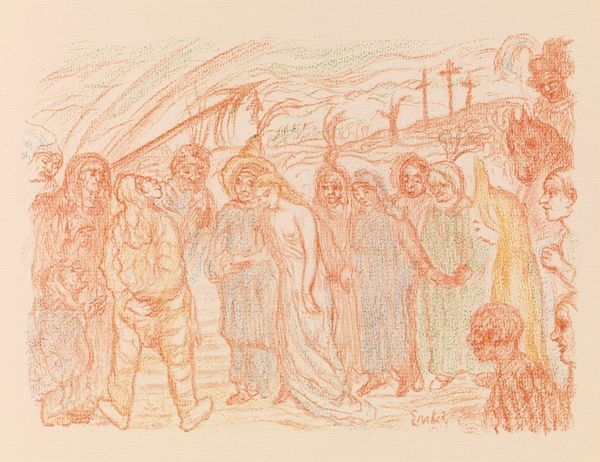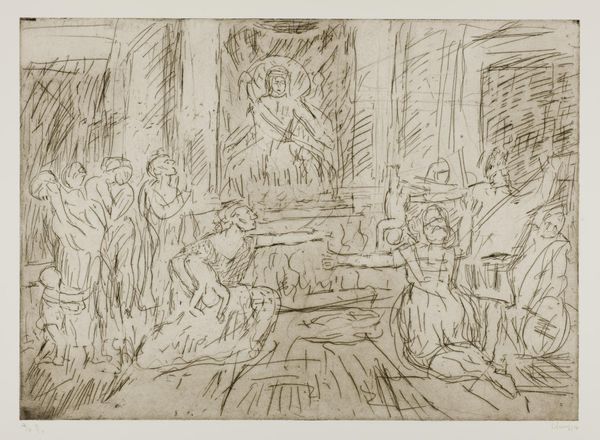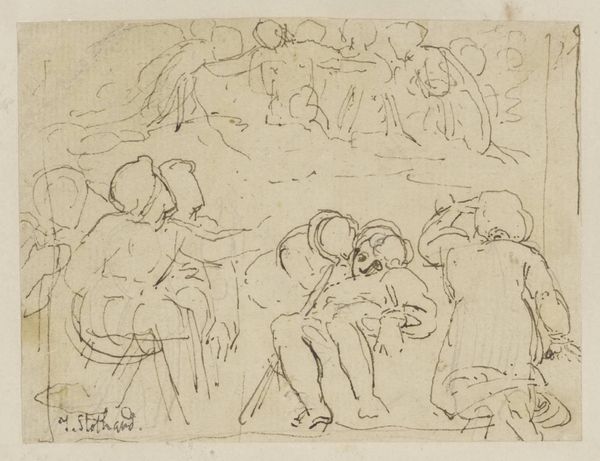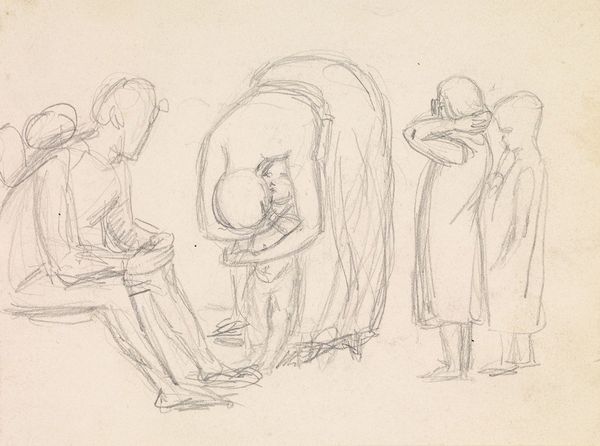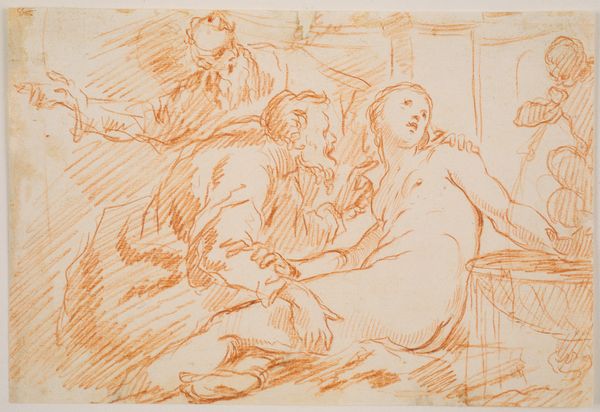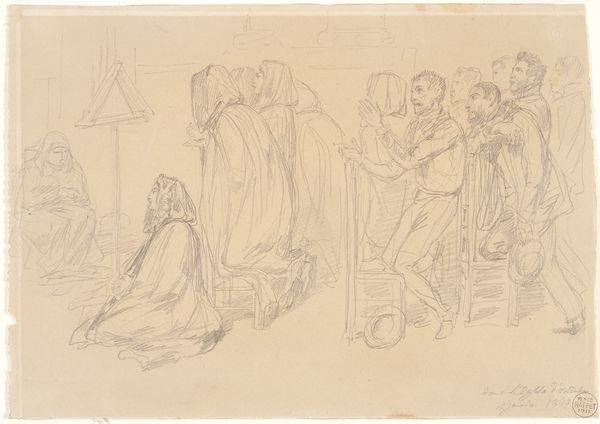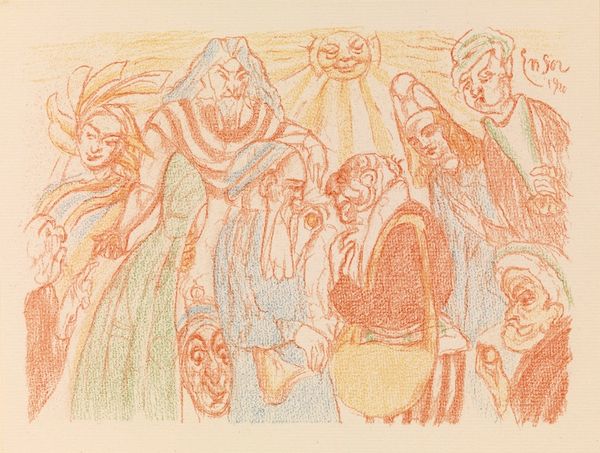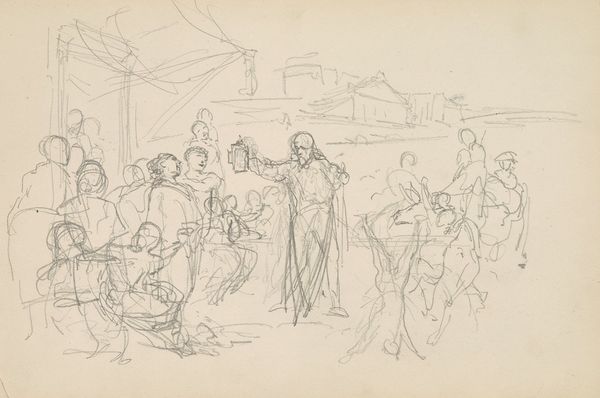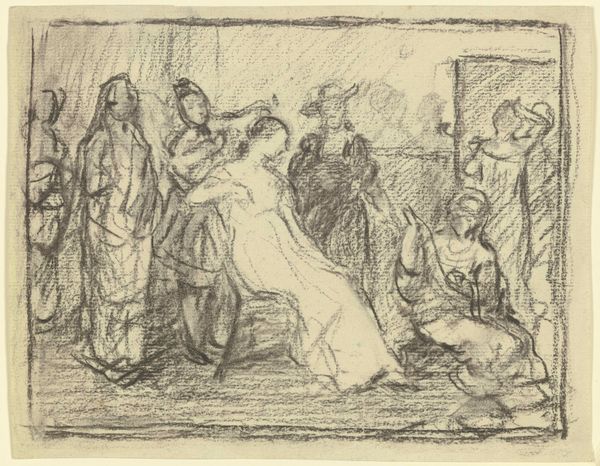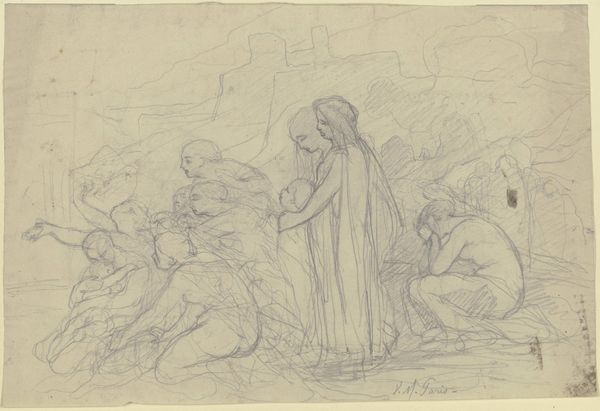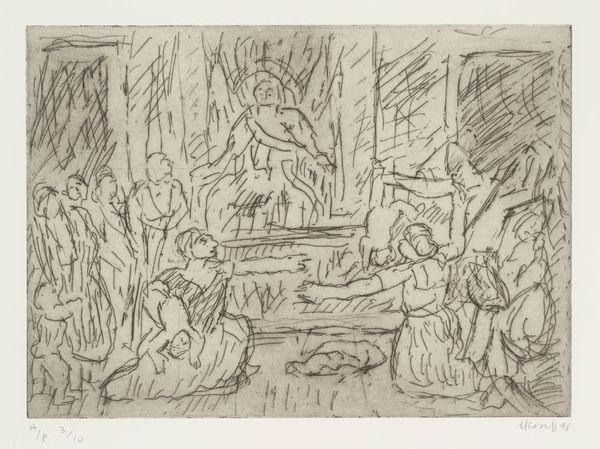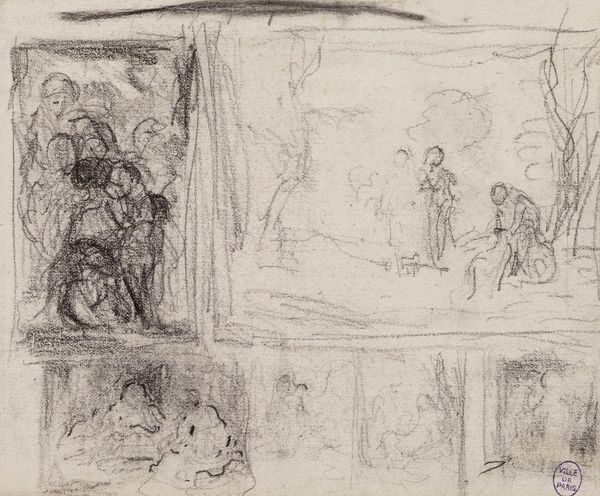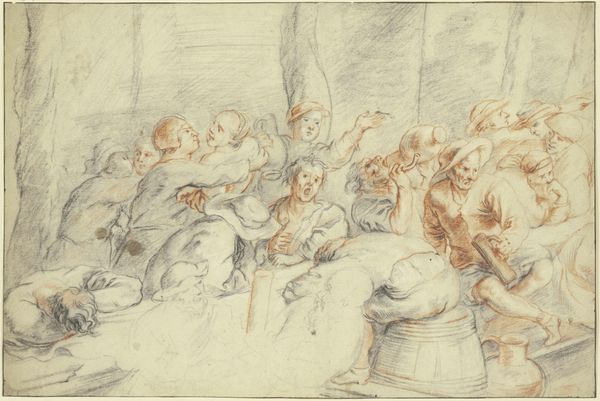
Copyright: Public Domain: Artvee
Editor: This is James Ensor's "The Adoration of the Magi," created in 1921 using etching. It's a fairly small print, but I'm struck by the chaotic energy of the scene, like a dream being scribbled down. How do you interpret this work? Curator: Ensor was often critical of institutions. How do you see his cynicism reflected in his art, especially with a subject matter as traditional as the Adoration? Note that in the early 20th century, the church and state had complex dynamics. Editor: Well, it's not exactly reverent. The figures feel crowded and the colour palette is almost jarring. Is it a rejection of traditional religious interpretations, or a reflection on societal structures around religion? Curator: Perhaps both. Ensor positions the religious narrative within a framework of social commentary. The political power of imagery can subvert the narrative. Does this challenge or reinforce his status as an avant-garde artist in the face of tradition? Editor: So, by using this religious scene, Ensor could be critiquing societal values and structures rather than just telling a Bible story? That adds another layer of understanding to his use of symbolism. Curator: Exactly. He uses the familiar to highlight what he saw as the absurdity or hypocrisy within his society. And consider how the reproduction through etching and printing influences the democratization, distribution, and therefore the politics, of art. Does mass production alter the viewing public's reception? Editor: I hadn't thought of that. It really puts Ensor's work into a wider historical context, impacting public consumption. This definitely changes how I see this piece! Curator: It highlights how intertwined art and societal institutions can be.
Comments
No comments
Be the first to comment and join the conversation on the ultimate creative platform.
